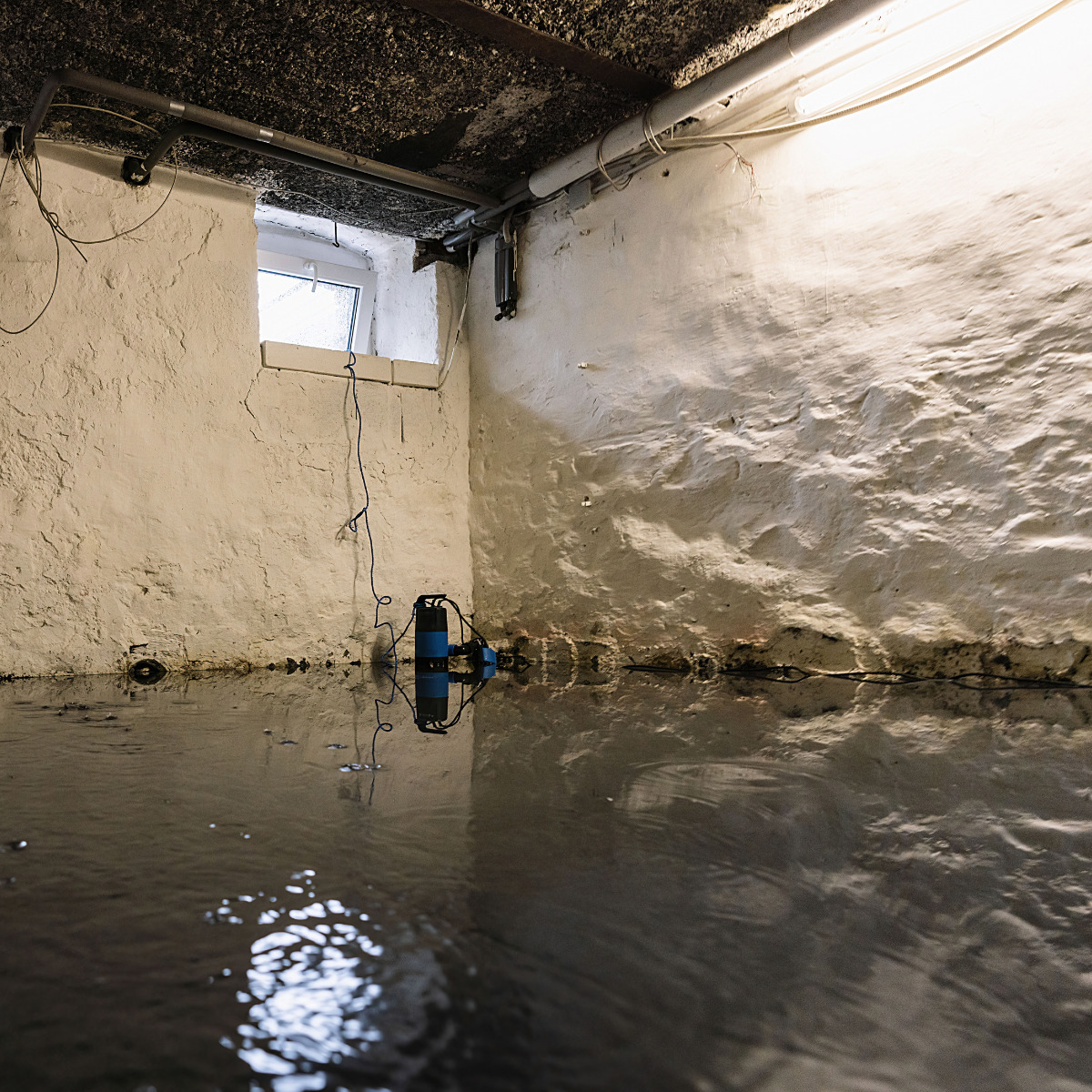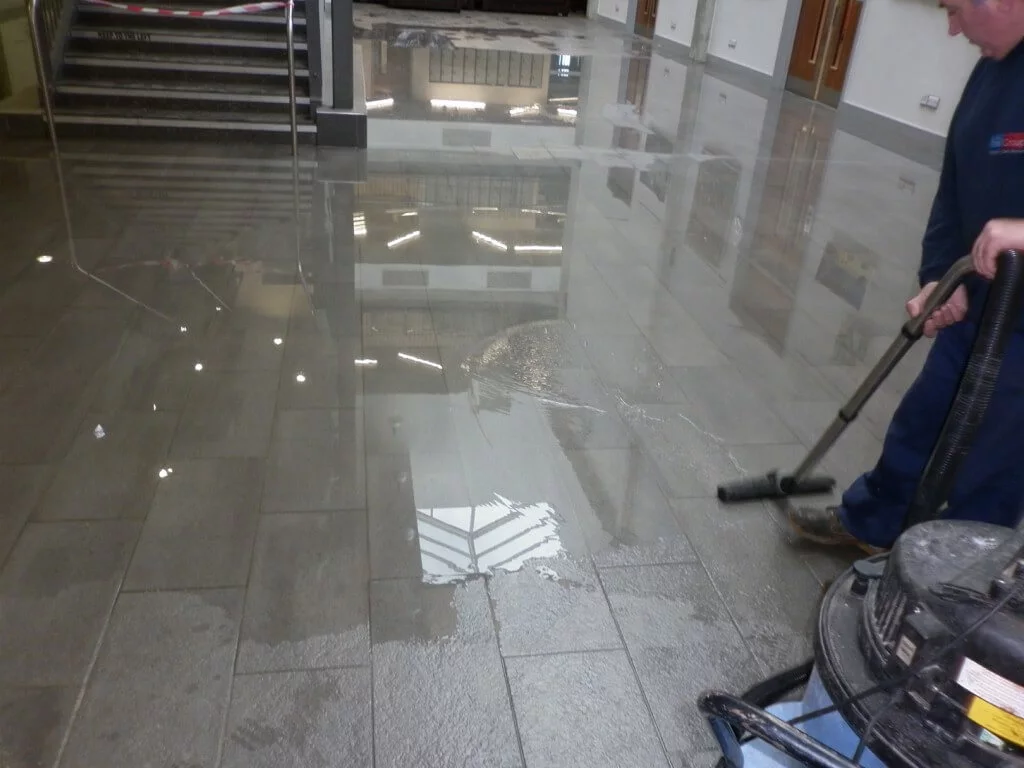
What Is Stagnant Water?
Stagnant water refers to water that has stopped flowing or moving. It can accumulate in low-lying areas, puddles, basements, or containers and remain still for extended periods. Without circulation, stagnant water becomes a perfect environment for the growth of algae, bacteria, and even dangerous pathogens like those that cause diseases. Stagnant water can form indoors or outdoors, making it a common issue in both homes and natural environments.
Examples of stagnant water include:
- Puddles or pools of water in your yard
- Standing water in drains or gutters
- Floodwater that hasn’t been properly drained
- Water collecting in containers like buckets or birdbaths
- Basements that flood and remain damp
Why Is Stagnant Water Dangerous?

Stagnant water is more than just an unpleasant sight—it can lead to a range of health and environmental issues. Whether in or around your home, stagnant water can create hazardous conditions that need to be addressed immediately. Here are the main reasons stagnant water is dangerous:
1. Breeding Ground for Mosquitoes
One of the biggest dangers of stagnant water is that it becomes a breeding ground for mosquitoes. Female mosquitoes lay their eggs in standing water, and within a few days, those eggs hatch into larvae, creating a mosquito infestation. This can lead to the spread of diseases like West Nile Virus, Zika, and Dengue fever, which are carried by mosquitoes.
2. Growth of Harmful Bacteria and Parasites
Stagnant water is a perfect breeding ground for harmful bacteria and parasites. Pathogens like E. coli, Salmonella, and Legionella thrive in still water, increasing the risk of waterborne diseases. Exposure to contaminated stagnant water can cause infections, gastrointestinal issues, and even respiratory problems.
3. Mold Growth and Water Damage
If stagnant water is left indoors, such as in a flooded basement or under a leaking roof, it can lead to mold growth and severe water damage. Mold thrives in damp environments, and stagnant water provides the moisture it needs to grow quickly. Mold infestations can cause structural damage to your home and lead to health problems like allergies, asthma, and other respiratory issues.
If you’re dealing with mold caused by stagnant water, check out this Citywide Mold Mitigation guide for tips on how to remove it safely.
4. Unpleasant Odors
Stagnant water often gives off a foul odor due to the buildup of bacteria, algae, and decaying organic matter. The smell can become unbearable, especially in enclosed spaces like basements or garages. The longer stagnant water sits, the worse the odor becomes.
5. Structural Damage to Your Home
If stagnant water is present indoors for an extended period, it can lead to significant structural damage. Water that seeps into floors, walls, or foundations can weaken the structural integrity of your home, leading to costly repairs. Over time, this can result in rotting wood, warping, and even the growth of harmful mold and mildew.
How to Get Rid of Stagnant Water

Dealing with stagnant water quickly is key to preventing the risks mentioned above. Here’s how to effectively remove stagnant water from your home or property and prevent it from returning:
| Step | What to Do |
|---|---|
| 1. Drain or Remove the Water | If you have standing water in a basement, yard, or other area, use a pump or wet/dry vacuum to remove the water. Ensure that the area is completely drained to prevent water from accumulating again. For small areas of stagnant water, such as in birdbaths or containers, simply dump the water out and clean the container. |
| 2. Dry Out the Area | Once the water is removed, dry the area thoroughly. Use fans, dehumidifiers, or open windows to ensure proper ventilation and drying. This step is especially important for indoor areas like basements or garages where mold could develop. |
| 3. Clean and Disinfect | Stagnant water can leave behind bacteria, mold spores, and other contaminants. Clean and disinfect the affected area using a bleach solution or commercial cleaner to kill any remaining bacteria or mold. Be sure to scrub thoroughly, especially in areas where mold may have already started to grow. |
| 4. Improve Drainage | To prevent stagnant water from forming in the future, address any drainage issues around your home. Install French drains, fix gutters, and ensure that your property slopes away from your home’s foundation to direct water flow away from problem areas. This will help reduce the risk of water pooling in your yard or around your home’s exterior. |
How to Prevent Stagnant Water from Forming
Prevention is key to avoiding the problems that come with stagnant water. Here are some effective ways to stop stagnant water from accumulating on your property or in your home:
1. Fix Leaks and Plumbing Issues
Leaky pipes, broken gutters, or clogged drains can all contribute to stagnant water. Regularly inspect your home for signs of leaks or water damage, and address plumbing or roofing issues immediately to prevent water from accumulating.
2. Keep Gutters and Drains Clear
Ensure that your gutters, drains, and downspouts are free from debris like leaves, dirt, and sticks. Clogged gutters can cause water to pool on your roof or near your home’s foundation, leading to stagnant water. Clean out your gutters at least once every season to keep water flowing properly.
3. Fill in Low-Lying Areas in Your Yard
If your yard has areas where water tends to pool after rain, consider filling them in with soil or installing a drainage system. Leveling out low spots will help prevent water from collecting and becoming stagnant.
4. Use a Dehumidifier Indoors
For indoor areas like basements or garages that are prone to dampness, use a dehumidifier to reduce moisture levels. Keeping the humidity low will prevent water from accumulating and reduce the chances of mold growth.
FAQ
| Question | Answer |
|---|---|
| What causes stagnant water? | Stagnant water occurs when water stops flowing and remains still for an extended period. Common causes include poor drainage, leaks, and low-lying areas where water pools after rain. |
| Is stagnant water dangerous to my health? | Yes, stagnant water can become a breeding ground for harmful bacteria, parasites, and mosquitoes. Exposure to stagnant water can increase the risk of waterborne diseases and infections. |
| Can stagnant water cause mold? | Yes, stagnant water creates the perfect environment for mold to grow. Mold can spread quickly in damp areas and cause structural damage as well as health problems. |
| How do I prevent stagnant water in my yard? | To prevent stagnant water, improve the drainage around your home, fill in low-lying areas, and keep gutters and downspouts clear of debris to ensure water flows away from your property. |
| Should I call a professional for stagnant water cleanup? | If stagnant water has led to mold growth or water damage in your home, it’s best to call a professional mold remediation or water damage restoration service to ensure proper cleanup. |
If stagnant water has caused damage or mold in your home, contact Citywide Mold Mitigation for professional water damage and mold removal services today.

